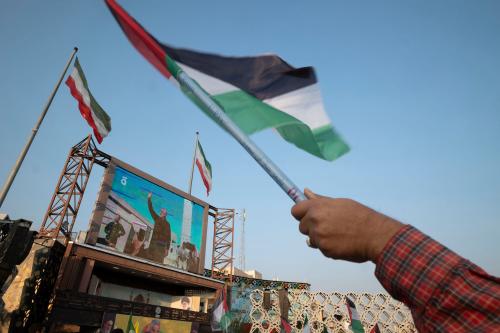Editor’s note: The following is an excerpt from the article “Is This a New War on Terror?” and was originally published by POLITICO Magazine.
Al Qaeda declared war on America in 1998 with a fatwa signed by Osama bin Laden, and since then, the United States has been in multiple interrelated wars with al Qaeda and its allies and offshoots. The enemy has demonstrated remarkable resilience and adaptability. For example, three different leaders of al Qaeda in Iraq, the predecessor of today’s Islamic State, were killed by U.S. forces, yet the group has not only survived but thrived. Franchises and offshoots have repeatedly shown a capacity to regenerate after major setbacks. (We should expect the same in Afghanistan and Pakistan as we depart by next year.)
Now, the group calling itself the Islamic State poses a number of challenges for the United States, including potential threats to the homeland in the future, an immediate regional and ideological threat and an insurgent threat.
Importantly, ISIL is also a hostage challenge. In general, the American people want hostages rescued, not grand strategic plans that take years to succeed. But some 35 years ago, two presidents—Jimmy Carter and Ronald Reagan—found it extremely difficult to handle hostage-taking. Carter lost his bid for reelection in 1980 with Desert One, his failed mission to end the Iran hostage crisis, and Ronald Reagan foolishly traded arms for American hostages held in Lebanon by Iran-backed Hezbollah and narrowly escaped impeachment. Both presidencies became consumed with hostage crises.
The United States has not confronted as significant a hostage/counterterrorism problem as ISIL since 1991. That year, George H. W. Bush found a winning strategy because he had something to give Iran and Hezbollah (blaming Iraqi President Saddam Hussein for starting the Iran-Iraq War after it was long over) and because Hussein had inadvertently freed Shia captives in Kuwait, for whom Hezbollah wanted to trade hostages. President Obama has no such negotiating options. He has also learned that hostage rescue missions are almost always long shots.
ISIL’s next move is probably to seize more hostages while it continues to execute those it already holds—including more than 40 Turkish hostages the group is using to keep Ankara sidelined in the regional war and at least four remaining American and British hostages. And it can easily acquire more. The American public is likely to find a disconnect between a three-year or longer strategic response and images of horror that will continue on the nightly news.
It could easily get worse. Al Qaeda’s old core in Pakistan has one American hostage (completely forgotten by the media) and could easily take more in Pakistan. Al Qaeda in the Islamic Maghreb, based in Northern Africa, is basically a kidnap/extortion machine but has avoided Americans until now. That could change. And al Qaeda’s offshoot in Egypt is well-placed to take tourists hostage and has already beheaded captives. To add to the horror, ISIL cynically uses the symbols of the Guantánamo Bay detention camp—waterboarding and orange jump suits—to signal to its own constituency why the group takes and kills innocent journalists and aid workers: for revenge. No doubt ISIL hopes this will incite copycat violence in the West.
Obama could face two-plus years of hostage-taking and executions that seem to underscore the limits of American power. It will be easy for critics to charge him as weak and ineffective without, of course, providing a policy that stops hostage-taking. He says we need to fight smarter against our enemy. The president has that right.



Commentary
Op-edIs This a New War on Terror? A Hostage Crisis, Too
September 16, 2014